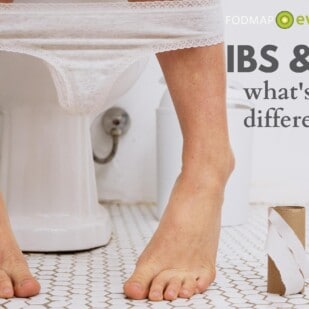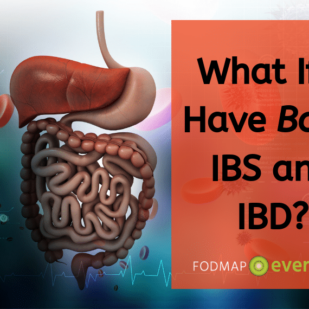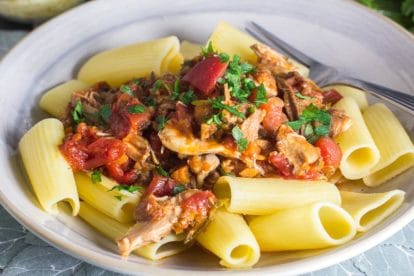Can a low FODMAP diet help my IBD?
As a dietitian specializing in inflammatory bowel disease (IBD), one of the most popular questions patients ask me is “Can a low FODMAP diet help my IBD?”
The low FODMAP diet is an enticing option thanks to its rise in popularity and success in treating patients with irritable bowel syndrome (IBS). For many with IBS, a low FODMAP diet is an obvious choice. But its role in helping those with IBD is less clear.
Unlike IBS, IBD causes chronic and relapsing inflammation of the gastrointestinal tract. The two key types of IBD include Crohn’s disease and ulcerative colitis. For a thorough comparison of IBS vs IBD, read “What If I Have Both IBS and IBD?”.
Back to the question at hand: “Can a low FODMAP diet help people with IBD?”
Research Shows Low FODMAP Diet Can Improve IBD Symptoms
Existing research supports using a low FODMAP diet to help people with IBD in remission. Over 1/3rd of patients with IBD report gut symptoms in the absence of gut inflammation.
Multiple studies have shown that a low FODMAP diet can improve GI symptoms, including flatulence, abdominal pain, bloating, stool frequency and stool consistency, in this patient population. Plus, study participants reported a higher quality of life on the low FODMAP diet. You might expect the innate dietary restrictions of a low FODMAP diet to reduce quality of life, but the opposite was reportedly true.
In reality though, following a low FODMAP diet can be especially challenging for people with IBD. Many as these folks already limit or avoid certain foods, so a low FODMAP diet piles on more dietary restrictions. Everyone on a low FODMAP diet should work with an RD, but it’s essential that someone with additional limitations do so.
Fiber and IBD Can Be Particularly Difficult
Ranking high on the list of popular dietary restrictions is fiber. Many people with IBD limit or avoid high-fiber foods. Some do so out of necessity, others out of fear or uncertainty about what they can and can’t eat.
Roughage, in particular, can worsen IBD symptoms. Roughage includes thick skins on fruits and vegetables, vegetable stalks, most raw vegetables, whole grains, whole nuts, seeds and popcorn.
Most people with inactive IBD can tolerate some roughage as long as they don’t have narrowing or stricturing of the GI tract, but many continue to avoid it.
Despite no inflammation and a low-roughage diet, lots of my IBD patients continue to report gas, bloating, abdominal pain and diarrhea. In these cases, I’ll recommend a short-term, low-roughage, low FODMAP trial.
 Let’s consider the following examples:
Let’s consider the following examples:
- Peanuts are high-roughage. Creamy peanut butter is low-roughage.
- A green salad with lots of low FODMAP vegetables is high-roughage. A green smoothie with lots of vegetables is low-roughage.
- A handful of raspberries are high-roughage. A handful of ripe cantaloupe is low-roughage.
- A serving of cucumber with skin is high-roughage. A serving of cucumber without skin is low-roughage.
- A cup of raw broccoli is high-roughage. A cup of well-cooked broccoli florets is low-roughage.
- A cup of cherry tomatoes is high-roughage. A cup of pureed tomato sauce is low-roughage.
Preparation Counts
See how the preparation method affects the foods’ coarse nature? Cooking, blending and peeling foods can transform a high-roughage food to a low-roughage food.
Just like many low FODMAP foods are high in roughage, many low-roughage foods are high in FODMAPs. Here are some examples: hummus, a ripe banana, a peeled apple, pasta with basil-garlic pesto, and puréed mushroom soup.
So, what can people eat on a low-roughage, low-FODMAP diet?
- Low FODMAP fruits without thick skins and seeds
- Well-cooked low FODMAP vegetables without thick skins or stalks, like those you find in Berbere Spiced Mashed Potatoes, Parsnips & Carrots side dish and Potato Eggplant Curry
- Low FODMAP soups, like this Root Vegetable Soup
- Low FODMAP smoothies, like this Green Kiwi Smoothie
- Creamy all-natural peanut butter on rice cakes
- Gluten-free pasta with low FODMAP sauces, like this Parsley Pesto
- Stir-fries with low FODMAP vegetables, lean protein and white rice
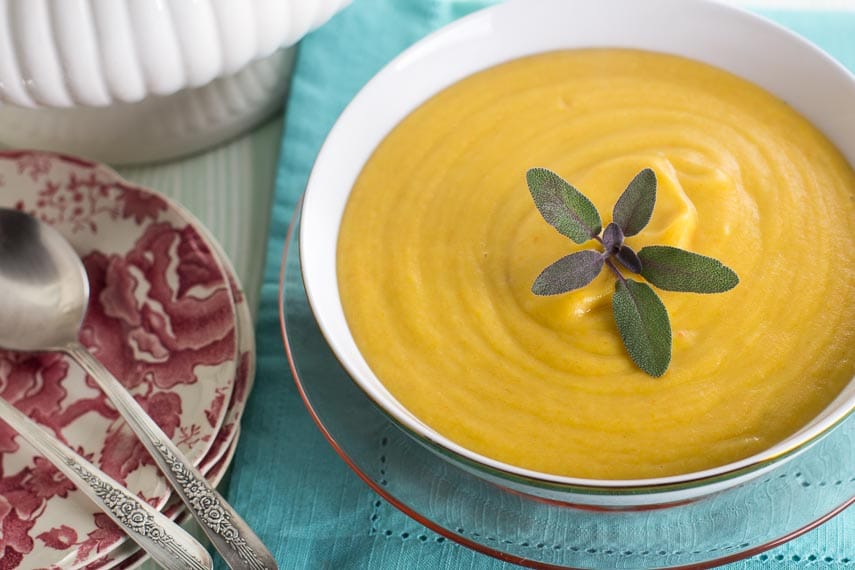
I’ll admit, it’s not the easiest diet to follow, but meal planning, a little creativity and help from a knowledgeable dietitian makes it entirely possible to enjoy delicious and nutritious meals.
IBD and the Low FODMAP Diet Challenge Phase
When it’s time to start the Low FODMAP Diet Challenge phase, often I begin with low FODMAP, high-roughage foods. Maybe a few raw carrots, a few lettuce leaves or some strawberries.? More often than not, my patients with inactive IBD feel fine with some roughage. From there we’ll add back FODMAPs.
To play it safe, I’ll have them start with low-roughage versions of high FODMAP foods before trying high-roughage, high FODMAP foods. Cautious challenges are best for IBD patients.
Resources for IBD Patients
The Crohns & Colitis Foundation
Eating with IBD: The Essentials
To work with Colleen Webb you may contact her here. And you can read about Colleen in her bio here and our interview with her here.
Resources for RDs
If you are a RD, please look into Colleen’s The Ultimate Online Course for Registered Dietitians Treating IBD Patients.
References
Cox SR, Lindsay JO, Fromentin S, et al. Effects of Low FODMAP Diet on Symptoms, Fecal Microbiome, and Markers of Inflammation in Patients With Quiescent Inflammatory Bowel Disease in a Randomized Trial. Gastroenterology. 2020;158(1):176-188.e7. doi:10.1053/j.gastro.2019.09.024
Halpin SJ, Ford AC. Prevalence of symptoms meeting criteria for irritable bowel syndrome in inflammatory bowel disease: systematic review and meta-analysis. Am J Gastroenterol. 2012;107(10):1474-1482. doi:10.1038/ajg.2012.260
Pedersen N, Ankersen DV, Felding M, et al. Low-FODMAP diet reduces irritable bowel symptoms in patients with inflammatory bowel disease. World J Gastroenterol. 2017;23(18):3356-3366. doi:10.3748/wjg.v23.i18.3356
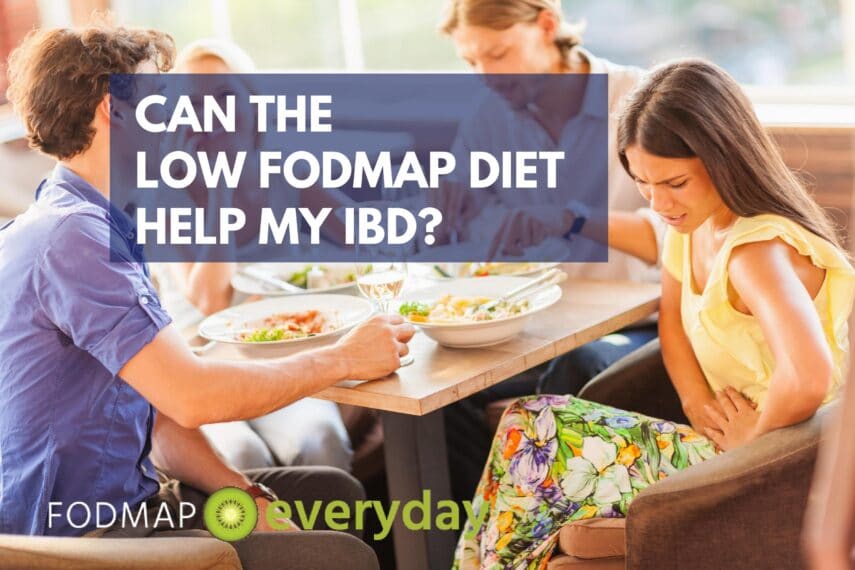
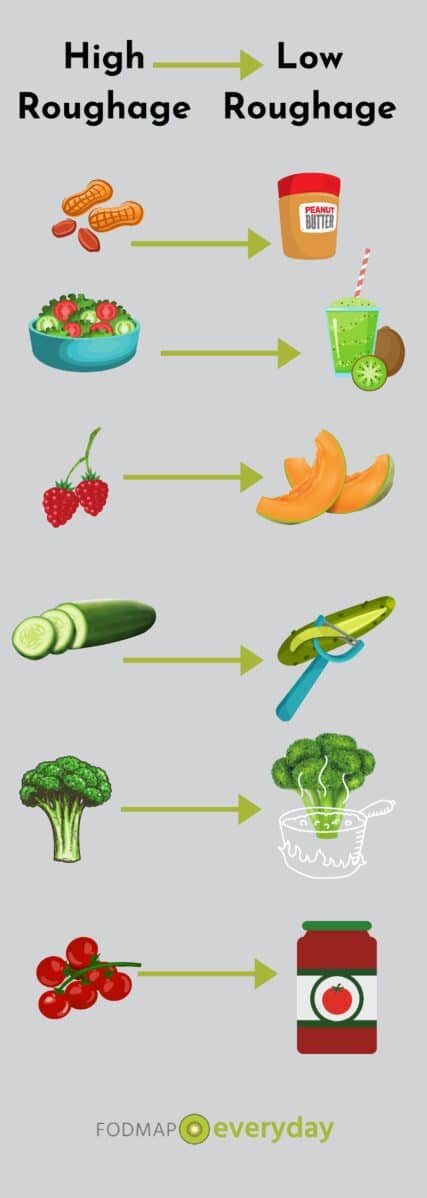 Let’s consider the following examples:
Let’s consider the following examples: